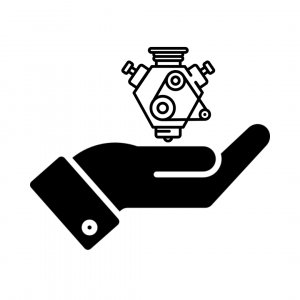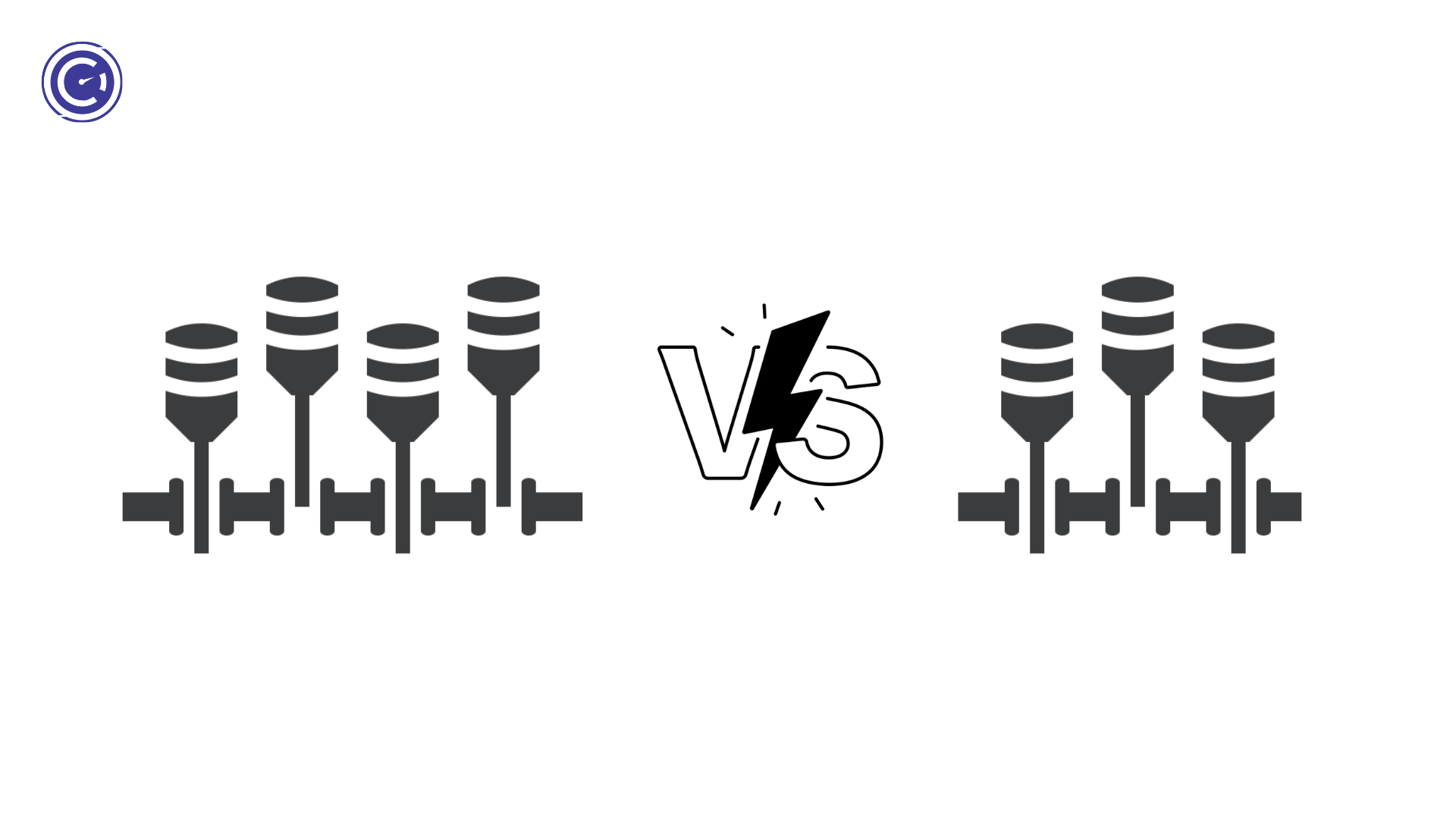When it comes to car engines, one of the key decisions that buyers face is choosing between a 3-cylinder and a 4-cylinder configuration. The number of cylinders directly affects the performance, fuel efficiency, and overall driving experience of a vehicle. Understanding the differences between these two options is essential for making an informed decision that suits your needs and preferences.
In this article, we will delve into the characteristics, advantages, and disadvantages of 3-cylinder vs 4-cylinder car engines. We will explore their performance capabilities, fuel efficiency, cost considerations, and other factors that can influence your choice. Whether you’re a car enthusiast or a potential buyer, this guide aims to provide a clear understanding of the distinctions between these two engine configurations. By examining their respective benefits and drawbacks, readers will gain valuable insights to help them make an informed decision when it comes to purchasing a vehicle.
It’s important to note that both 3-cylinder vs 4-cylinder engines have their own set of advantages and disadvantages, making them suitable for different driving scenarios and individual preferences. By exploring these factors in detail, you’ll be equipped with the knowledge needed to choose the engine configuration that best aligns with your specific requirements.
So, let’s dive into the world of 3-cylinder vs 4-cylinder car engines, explore their differences, and discover which option may be the right fit for you.
Table of Contents
What is a 3-Cylinder Engine?

A 3-cylinder engine is an internal combustion engine with three cylinders in its design. This configuration is commonly found in small and compact cars, where space and fuel efficiency are priorities. In this section, we will delve into the specifics of a 3-cylinder engine, including its construction, operation, and benefits.
Recommended – What is Car Damping | Everything You Need to Know
I. Construction and Operation of a 3-Cylinder Engine:
A. Cylinder Arrangement:
- Inline-3 Configuration: The cylinders are arranged in a straight line, resulting in a compact engine design.
- V3 Configuration: The cylinders are arranged in a triangular pattern, resembling a “V” shape.
B. Firing Order:
- Sequential Firing: The engine’s combustion cycles occur in a specific sequence, which ensures smooth and balanced operation.
C. Displacement and Size:
- Smaller Displacement: 3 cylinder engines typically have a smaller displacement compared to engines with more cylinders.
- Compact Size: Due to their reduced number of cylinders, 3-cylinder engines are more compact and lighter.
Recommended – A Comprehensive Guide to Choosing the Right OBD Scanner for Your Vehicle
II. Advantages of 3 Cylinder Engines:
A. Fuel Efficiency:
- Reduced Friction: With fewer moving parts, 3-cylinder engines experience fewer frictional losses, leading to improved fuel efficiency.
- Lighter Weight: The smaller size of the engine contributes to a lighter overall vehicle weight, enhancing fuel economy.
B. Compact Design:

- Space Efficiency: The compact size of 3-cylinder engines allows for better space utilization, making them ideal for smaller vehicles.
- Maneuverability: The reduced weight and size improve the vehicle’s maneuverability, especially in tight spaces or urban environments.
C. Environmental Benefits:

- Lower Emissions: 3 cylinder engines tend to produce fewer emissions due to their smaller displacement and efficient combustion.
- Compliance with Regulations: They meet stringent emission standards set by regulatory bodies, contributing to a cleaner environment.
Recommended – Top 5 Most Common Signs of Bad Suspension
III. Disadvantages of 3 Cylinder Engines:
A. Power Output:
- Lower Power and Torque: Compared to engines with more cylinders, 3-cylinder engines generally have lower power and torque outputs.
- Limited Performance: This can result in reduced acceleration and limitations in towing capacity or high-speed performance.
B. Vibrations and Noise:
- Imbalance: The uneven firing intervals of 3-cylinder engines can lead to more vibrations and increased engine noise.
- Technological Advancements: Modern designs incorporate advanced balancing mechanisms to minimize vibrations.
C. Application Limitations:
- Vehicle Size and Weight: 3 cylinder engines are better suited for smaller and lighter vehicles rather than larger or heavier ones.
- Performance-oriented Applications: They may not provide sufficient power for high-performance vehicles or heavy towing.
In conclusion, 3-cylinder engines offer several advantages, including fuel efficiency, compactness, and reduced emissions. They are well-suited for small and compact cars, providing a balance between performance and economy. However, they may not deliver the same power output as engines with more cylinders, and vibrations and noise can be a concern. Understanding these characteristics will help you make an informed decision when choosing a vehicle powered by a 3-cylinder engine.
Recommended – IMT vs AMT. Who’s more intelligent of the two?
What is a 4-Cylinder Engine?

A 4 cylinder engine is an internal combustion engine with four cylinders arranged in a specific configuration. This engine configuration is commonly found in a wide range of vehicles, from compact cars to larger sedans and SUVs. In this section, we will explore the construction, operation, and benefits of a 4-cylinder engine in detail.
I. Construction and Operation of a 4-Cylinder Engine:
A. Cylinder Arrangement:
- Inline-4 Configuration: The cylinders are arranged in a straight line, resulting in a compact and efficient engine design.
- Boxer-4 Configuration: The cylinders are horizontally opposed, creating a lower center of gravity and balanced operation.
B. Firing Order:
- Sequential Firing: The engine’s combustion cycles occur in a specific sequence, ensuring smooth and balanced operation.
C. Displacement and Size:
- Varied Displacement: 4-cylinder engines can have different displacements, depending on their intended application and power requirements.
- Versatile Sizes: From small-displacement engines for fuel efficiency to larger-displacement engines for performance, 4-cylinder engines offer a wide range of options.
Recommended – CVT vs DCT. Your 10 Min Guide to Choosing the Right Car
II. Advantages of 4 Cylinder Engines:
A. Balance of Power and Efficiency:
- Good Power-to-Weight Ratio: 4-cylinder engines strike a balance between power output and fuel efficiency, making them suitable for various applications.
- Improved Fuel Economy: With fewer cylinders and reduced frictional losses, 4-cylinder engines tend to offer better fuel efficiency compared to engines with more cylinders.
B. Smooth Operation:
- Better Balance: The even number of cylinders in 4-cylinder engine results in smoother operation and reduced vibrations compared to engines with odd numbers of cylinders.
- Enhanced NVH (Noise, Vibration, and Harshness): Manufacturers employ various technologies to minimize engine noise and vibrations, ensuring a comfortable driving experience.
Recommended – Petrol Cars VS Diesel Cars: A Quick and Definitive Guide
C. Lower Manufacturing and Ownership Costs:
- Cost-Effective Production: 4-cylinder engines are generally less complex and easier to manufacture, resulting in lower production costs.
- Affordable Maintenance: Parts and servicing for 4-cylinder engines are often more readily available and affordable compared to engines with more cylinders.
III. Disadvantages of 4 Cylinder Engines:
A. Power Limitations:
- Moderate Power Output: While 4-cylinder engines offer a balance of power and efficiency, they may not match the high-power outputs of engines with more cylinders.
- Limited High-Performance Applications: In high-performance vehicles or heavy-duty applications, engines with more cylinders may be preferred for their greater power potential.
B. Towing and Heavy Load Capacity:
- Reduced Towing Capability: Due to their lower power output, 4-cylinder engines may have limitations when it comes to towing heavy loads or trailers.
- Performance Under Heavy Loads: When subjected to heavy loads, 4-cylinder engines may experience decreased performance and require higher revs to maintain power.
Recommended – 14 Forgotten TVS Bikes and Scooters From The Past
C. Vehicle Size Considerations:
- Suitable for Various Vehicle Sizes: 4-cylinder engines are versatile and can be found in a range of vehicle sizes, but their power output may be better suited for smaller to mid-sized vehicles.
- Compact Design: The relatively compact size of 4-cylinder engines allows for better packaging in the engine compartment, maximizing interior space.
In conclusion, 4 cylinder engines offer a balance of power, efficiency, and versatility. They are commonly found in a wide range of vehicles, from compact cars to mid-size sedans and SUVs. While they may not deliver the same power as engines with more cylinders, they excel in fuel efficiency, smooth operation, and affordability. Consider your specific needs and priorities when choosing a vehicle powered by a 4-cylinder engine, as it provides a reliable and efficient option for everyday driving.
Which Type of Engine is Right for You? (3-Cylinder vs 4-Cylinder)
Choosing the right type of engine for your vehicle is a crucial decision that can impact its performance, fuel efficiency, and overall driving experience. Two popular options to consider are 3-cylinder vs 4-cylinder engines. In this section, we will explore the key factors to help you determine which type of engine is right for you.
I. Performance Considerations:
A. Power Output:
3 Cylinder Engines:
- Generally have lower power output compared to 4-cylinder engines.
- Suitable for smaller vehicles and everyday commuting.
4 Cylinder Engines:
- Offer higher power output, providing better acceleration and performance.
- Ideal for larger vehicles, towing, and sportier driving experiences.
B. Torque:
3 Cylinder Engines:
- May have lower torque due to fewer cylinders.
- May require higher revs to achieve optimal torque.
4 Cylinder Engines:
- Generally provide higher torque, resulting in better low-end power and acceleration.
- Well-suited for hauling heavy loads or driving in hilly areas.
II. Fuel Efficiency:
A. 3 Cylinder Engines:
- Tend to be more fuel-efficient compared to 4-cylinder engines.
- Have fewer moving parts, resulting in reduced friction and improved efficiency.
- Ideal for drivers looking for better fuel economy and cost savings.
B. 4 Cylinder Engines:
Offer good fuel efficiency, especially with advancements in technology.
Provide a balance between power and economy.
Suitable for drivers who desire a blend of performance and reasonable fuel consumption.
Recommended – What Are Cornering Headlights | Everything You Need to Know
III. Vehicle Type and Size:
A. Smaller Vehicles:
3 Cylinder Engines:
- Well-suited for compact cars, hatchbacks, and city driving.
- Provide adequate power for everyday commuting and lighter loads.
4 Cylinder Engines:
- Can accommodate a wider range of vehicle sizes, from compact to midsize sedans and SUVs.
- Deliver the necessary power for highway driving and larger passenger capacities.
B. Larger Vehicles:
3-Cylinder Engines:
- Generally not recommended for larger vehicles, as they may lack the necessary power and torque.
- May struggle when towing heavy loads or driving in demanding conditions.
4-Cylinder Engines:
- Better suited for larger vehicles, including SUVs, pickup trucks, and minivans.
- Provide the required power and torque for hauling and towing purposes.
IV. Cost Considerations:
A. Purchase Price:
- 3 cylinder engines are often more affordable compared to 4-cylinder engines.
- This can result in initial cost savings when buying a new vehicle.
B. Maintenance and Repairs:
- 4-cylinder engines may have more complex designs and additional components, potentially leading to higher maintenance and repair costs.
- 3 cylinder engines, with simpler designs, may require less frequent maintenance.
In conclusion, choosing between a 3-cylinder vs 4-cylinder engine depends on your specific needs and preferences. Consider factors such as desired power output, fuel efficiency, vehicle size, and overall cost. It is recommended to test drive vehicles with both engine types to experience their performance firsthand. Ultimately, selecting the right engine will enhance your driving experience and ensure your vehicle meets your requirements.

